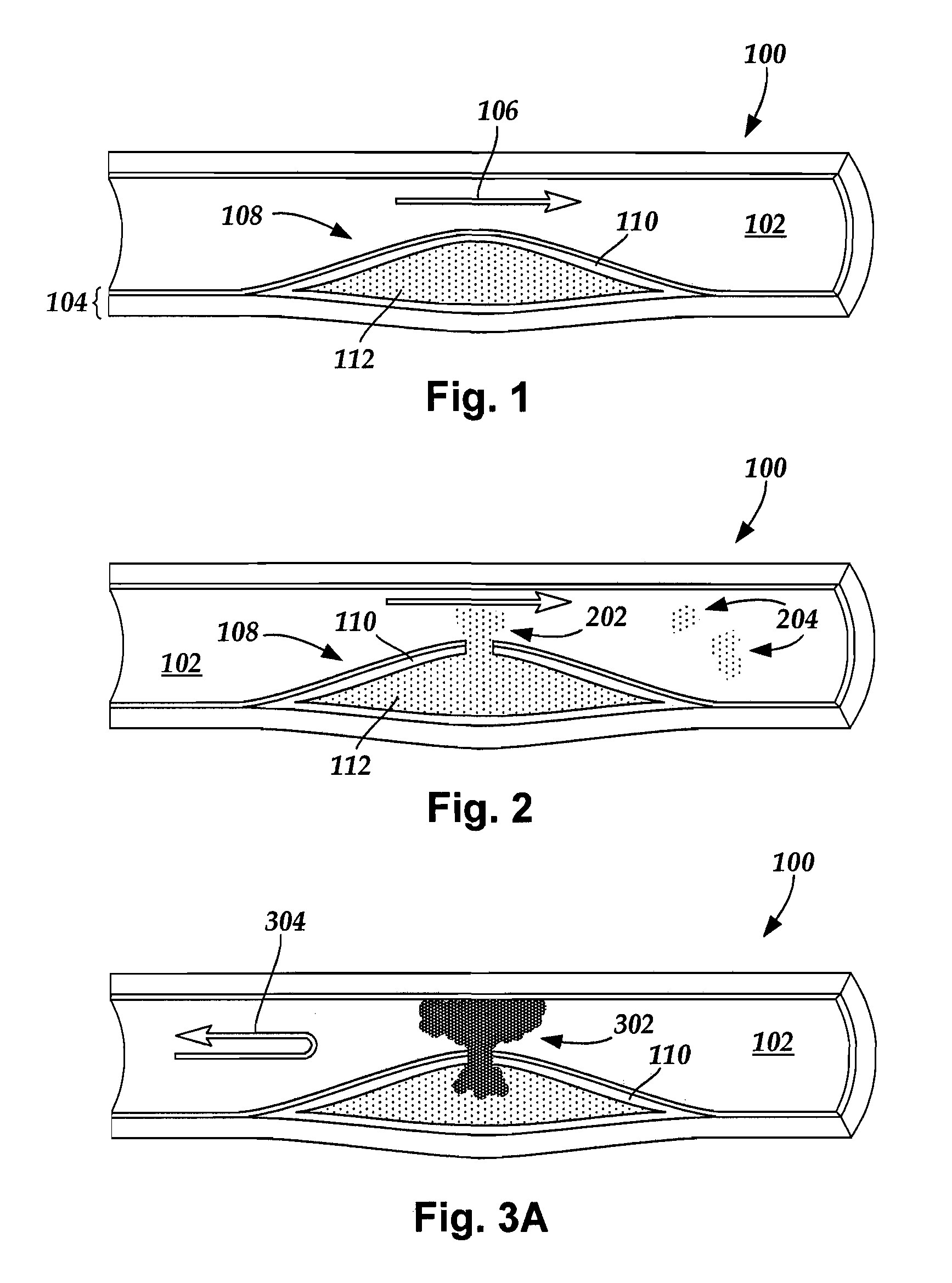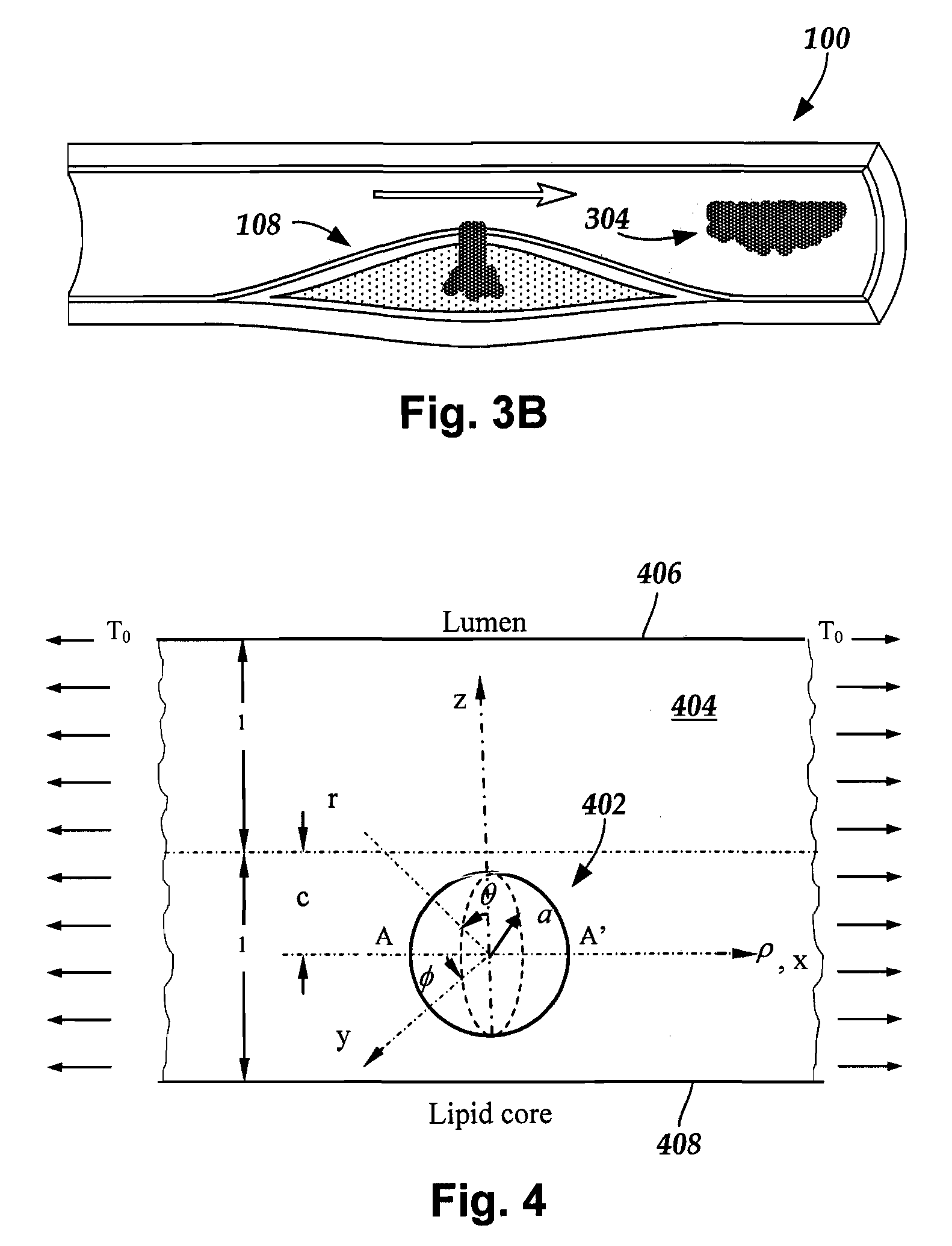System and method for in vivo imaging of blood vessel walls to detect microcalcifications
a blood vessel wall and in vivo imaging technology, applied in the field of systems for imaging blood vessel walls, can solve the problems of many different possible acute health problems, and the risk of rupture of atheroma is often not known
- Summary
- Abstract
- Description
- Claims
- Application Information
AI Technical Summary
Problems solved by technology
Method used
Image
Examples
Embodiment Construction
[0018] The present invention is directed to systems for imaging blood vessel walls to predict the risk of fibrous cap rupture and methods of using the systems. The present invention is also directed to systems that include imaging blood vessel walls to identify microcalcifications, as well as methods of using the systems.
[0019] Suitable medical diagnostic systems include, but are not limited to, in vivo imaging techniques for imaging a portion of a blood vessel of a patient to observe calcified inclusions (“microcalcifications”) in a fibrous cap (“cap”) of an atheroma. The term “microcalcification” refers to a calcified inclusion with a diameter of fifty micrometers or less. For example, a microcalcification diameter may be up to fifty micrometers, up to forty micrometers, up to twenty-five micrometers, up to twenty micrometers, between five micrometers and fifty micrometers, between five micrometers and forty micrometers, between five micrometers and twenty-five micrometers, and b...
PUM
 Login to View More
Login to View More Abstract
Description
Claims
Application Information
 Login to View More
Login to View More - R&D
- Intellectual Property
- Life Sciences
- Materials
- Tech Scout
- Unparalleled Data Quality
- Higher Quality Content
- 60% Fewer Hallucinations
Browse by: Latest US Patents, China's latest patents, Technical Efficacy Thesaurus, Application Domain, Technology Topic, Popular Technical Reports.
© 2025 PatSnap. All rights reserved.Legal|Privacy policy|Modern Slavery Act Transparency Statement|Sitemap|About US| Contact US: help@patsnap.com



